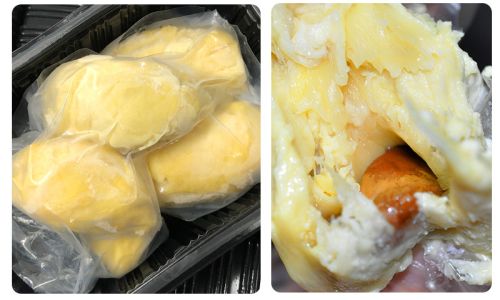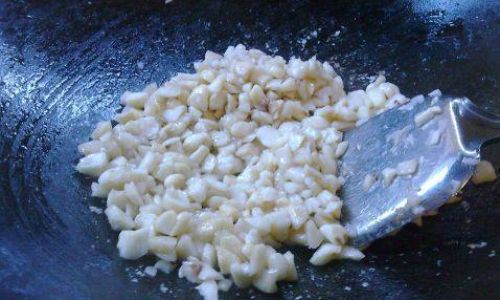Introduction

Durian, often referred to as the “king of fruits,” is renowned for its distinct, pungent aroma and creamy texture. Its unique flavor divides opinions sharply among fruit enthusiasts, with some adoring its rich, custard-like flesh while others find it overpowering. When it comes to preserving the freshness and flavor of this exotic delicacy, modern technology has introduced innovative methods, one of which involves freezing durian in liquid nitrogen. This process not only extends its shelf life but also locks in its natural sweetness and aroma. However, thawing durian that has been frozen in liquid nitrogen requires careful handling to ensure it retains its optimal quality. This article will guide you through the process of safely thawing durian frozen in liquid nitrogen, highlighting the importance of temperature control, packaging, and storage conditions to maintain the fruit’s integrity.
Understanding Liquid Nitrogen Freezing
Before diving into the thawing process, it’s crucial to understand how liquid nitrogen freezing works. Liquid nitrogen is a cryogenic liquid with a temperature of approximately -196°C (-320°F). When durian is submerged or exposed to liquid nitrogen, its cells undergo rapid freezing, which minimizes the formation of ice crystals. These small ice crystals are less likely to damage the fruit’s cellular structure, preserving its texture and flavor more effectively than traditional freezer methods.
The rapid freezing also inhibits the growth of microorganisms, thereby extending the durian’s shelf life without the need for preservatives. However, this extreme cold must be reversed carefully to avoid compromising the fruit’s quality during thawing.
Preparation for Thawing
-
Identify the Packaging
Durian frozen in liquid nitrogen is typically packaged in airtight, cryogenic-safe containers to prevent freezer burn and maintain the cold temperature. Before thawing, ensure the packaging is intact and free of any leaks.
-
Choose the Thawing Method
There are two primary methods for thawing frozen durian: refrigerator thawing and cold water immersion. Each method has its own set of advantages and considerations.
Refrigerator Thawing
This method is the slowest but most recommended for maintaining the durian’s quality. Here’s how to do it:
-
Remove From Cryogenic Packaging
Carefully open the cryogenic container and transfer the frozen durian pieces to a sealed, airtight container or plastic wrap designed for freezer use. This prevents cross-contamination and moisture loss.
-
Place in the Refrigerator
Place the sealed container in the refrigerator’s coldest section, ideally the bottom shelf. The refrigerator’s temperature should be set to around 4°C (39.2°F) to ensure a gradual thaw.
-
Allow Sufficient Time
Depending on the size and thickness of the durian pieces, thawing can take anywhere from 12 to 24 hours or even longer. Smaller pieces will thaw faster than larger ones.
-
Monitor the Process
Periodically check the durian to ensure it is not thawing too quickly or developing ice crystals on the surface. If necessary, rearrange the pieces to ensure even thawing.
Cold Water Immersion
For those who need to thaw durian more quickly, cold water immersion can be used, but it requires closer monitoring to prevent over-thawing and potential quality loss.
-
Seal the Durian
As with refrigerator thawing, first transfer the frozen durian pieces to a sealed, airtight container.

-
Prepare the Cold Water Bath
Fill a large bowl or sink with cold water. The water should be changed every 30 minutes to maintain its chill. Using tap water directly from the faucet is usually sufficient, but ensure it’s not warm.
-
Submerge the Container
Submerge the sealed container of durian in the cold water bath. Ensure the water covers the container completely.
-
Monitor and Stir
Stir the water occasionally to maintain an even temperature and prevent hot spots. Check the durian every 15-30 minutes to assess its thawing progress.
-
Completion
Once the durian is fully thawed, remove it from the water bath and pat it dry with a clean paper towel. Promptly use or store it in the refrigerator to prevent spoilage.
Post-Thaw Handling
Once thawed, durian should be handled with care to maintain its freshness and flavor. Here are some tips:
-
Immediate Use
If possible, consume the thawed durian immediately. Its peak freshness and flavor are retained shortly after thawing.
-
Refrigeration
If not consumed right away, store the thawed durian in an airtight container in the refrigerator’s coldest section. Use within 2-3 days for optimal quality.
-
Avoid Re-Freezing
Once thawed, do not re-freeze the durian. This can alter its texture and flavor, making it less enjoyable.
-
Inspect for Quality
Before use, visually inspect the durian for any signs of discoloration, mold, or off odors. Discard any pieces that do not appear or smell fresh.
Conclusion
Thawing durian that has been frozen in liquid nitrogen is a delicate process requiring careful temperature control and monitoring. By choosing the right thawing method—whether refrigerator thawing for a slower, more gentle approach or cold water immersion for quicker results—you can ensure that your durian retains its signature creaminess, sweetness, and aroma. Proper handling and storage post-thaw are equally important to maintain the fruit’s optimal quality. With these guidelines, you can enjoy the king of fruits at its best, whether it’s straight from the freezer or after a thoughtful thawing process.
Remember, the key to successful thawing lies in patience and attention to detail. By treating your liquid nitrogen-frozen durian with care, you’ll be rewarded with a culinary experience that is as extraordinary as the fruit itself. So, the next time you indulge in this tropical delight, take a moment to appreciate the journey it’s undergone from its frozen state to your plate, and savor every bite.






0 comments